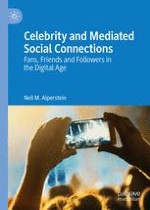2019 | OriginalPaper | Buchkapitel
3. Jacking in to an Extended Reality
verfasst von : Neil M. Alperstein
Erschienen in: Celebrity and Mediated Social Connections
Verlag: Springer International Publishing
Aktivieren Sie unsere intelligente Suche, um passende Fachinhalte oder Patente zu finden.
Wählen Sie Textabschnitte aus um mit Künstlicher Intelligenz passenden Patente zu finden. powered by
Markieren Sie Textabschnitte, um KI-gestützt weitere passende Inhalte zu finden. powered by
